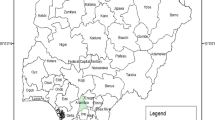Abstract
The coastal semi-arid region of South Texas is undergoing significant growth causing an enormous burden on its limited water resources. Understanding regional-scale vulnerability of this resource is important for sustainable water resources management and land use development. In this study, DRASTIC methodology is integrated with an information-analytic technique called rough sets to understand groundwater vulnerability characteristics in 18 different counties of South Texas. The rough set theory provides three useful metrics: the strength factor which depicts how vulnerability characteristics occur over the area; the certainty factor computes the relative probabilities for various vulnerability states within a county and the coverage factor which elucidates the fraction of a specific vulnerability state present in each county. The coupling of rough sets with GIS is particularly advantageous to cluster counties exhibiting similar vulnerability characteristics and to obtain other related insights. The application of the approach indicates that the groundwater vulnerability exhibits greater variability along the coast than in the interior sections of the area. The shallow aquifer in Aransas, DeWitt, Goliad and Gonzales counties is the most vulnerable, while the aquifer in Duval, Jim Wells, Karnes, Live Oak, Nueces and San Patricio is less vulnerable. This approach should prove useful to regional planners and environmental managers entrusted with the protection of groundwater resources.










Similar content being viewed by others
References
Administrative maps for Texas: TIGER maps by US Census Bureau (accessed on June 2004) http://www.arcdata.esri.com/data/tiger2000/tiger_download.cfm
Al-Admat RAN, Foster IDL, Baban SMJ (2003) Groundwater vulnerability and risk mapping for the Basaltic Aquifer of Azraq Basin of Jordan using GIS, remote sensing and DRASTIC. Appl Geogr 23:303–324
Aller L, Bennett T, Lehr JH, Petty RJ, Hackett G (1987) DRASTIC: a standardized system for evaluating ground water pollution potential using hydrogeologic settings. EPA/600/2–87/035, US Environmental Protection Agency, Washington, p 455
Al-Zabiet T (2002) Evaluation of aquifer vulnerability to contamination potential using the DRASTIC method. Environ Geol 43:203–208
An A, Shan N, Chan C, Cercone N, Ziarko W (1996) Discovering rules for water demand prediction: an enhanced rough sets approach. Eng Appl Artif Intel 9:645–653
Baker ET (1979) Stratigraphic and hydrogeological framework of part of the coastal plain of Texas. Texas department of water resources report 236, Austin, Texas, p 43
Cameron E, Pelosa GF (2001) An application of fuzzy logic to the assessment of aquifers’ pollution potential. Environ Geol 40:1305–1315
Chanas S, Kutcha D (1992) Further remarks on the relation between fuzzy and rough sets. Fuzzy Set Syst 47:391–394
Earth Resources Observation and Science (EROS) Data center, US Geological Survey (USGS). Digital Elevation Model (DEM) for topography (accessed on June 2004) http://www.edc.usgs.gov/
Edet AE (2004) Vulnerability evaluation of a coastal plain sand aquifer with a case example from Calabar, Southeastern Nigeria. Environ Geol 45:1062–1070
Evans BM, Myers WL (1990) A GIS-based approach to evaluating regional groundwater pollution potential using DRASTIC. J Soil Water Conserv 45:242–245
Fredrick KC, Becker MW, Flewlling DM, Silavisesrith W, Hart ER (2004) Enhancement of aquifer vulnerability indexing using the analytic-element method. Environ Geol 45:1054–1061
Komorowski J, Pawlak Z, Polkkowski L, Skowron A (1999) Rough sets: a tutorial Pal SK and Skowron A (eds) Springer, Singapore
National Climatic Data Center (NCDC), National Oceanic and Atmospheric Administration (NOAA), Historical precipitation records (accessed on June 2004) http://www.ncdc.noaa.gov/oa/climate/stationlocator.html
Natural Resources Conservation Service (NRCS), US Department of Agriculture (USDA). State Soil Geographic (STATSGO) database (accessed on June 2004) http://www.ncgc.nrcs.usda.gov/products/datasets/statsgo/
Pawlak Z (1982) Rough sets. Int J Inform Comput Sci 11:341–356
Pawlak Z (2005) Some remarks on conflict analysis. Eur J Oper Res 166:649–654
Shen Q, Chouchoulas A (2001) FuREAP: A fuzzy-rough estimator of algae populations. Artif Intell Eng 15:13–24
Tan RR (2005) Rule-based life cycle impact assessment using modified rough set induction methodology. Environ Model Softw 20:509–513
Texas Groundwater Database 2000 retrieved from Texas Water Development Board (TWDB) (Accessed on June 2004) http://www.twdb.state.tx.us/
Williams JR, Kissel DE (1991) Water percolation: An indicator of nitrogen-leaching potential Follett RF. Keeney DR, Cruse RM (eds) Soil Science Society of America, WI
Acknowledgments
Financial support from the National Science Foundation—Combined Research and Curriculum Development (CRCD) program (Award No: 0203482) is gratefully acknowledged.
Author information
Authors and Affiliations
Corresponding author
Rights and permissions
About this article
Cite this article
Uddameri, V., Honnungar, V. Combining rough sets and GIS techniques to assess aquifer vulnerability characteristics in the semi-arid South Texas. Environ Geol 51, 931–939 (2007). https://doi.org/10.1007/s00254-006-0456-1
Received:
Accepted:
Published:
Issue Date:
DOI: https://doi.org/10.1007/s00254-006-0456-1




